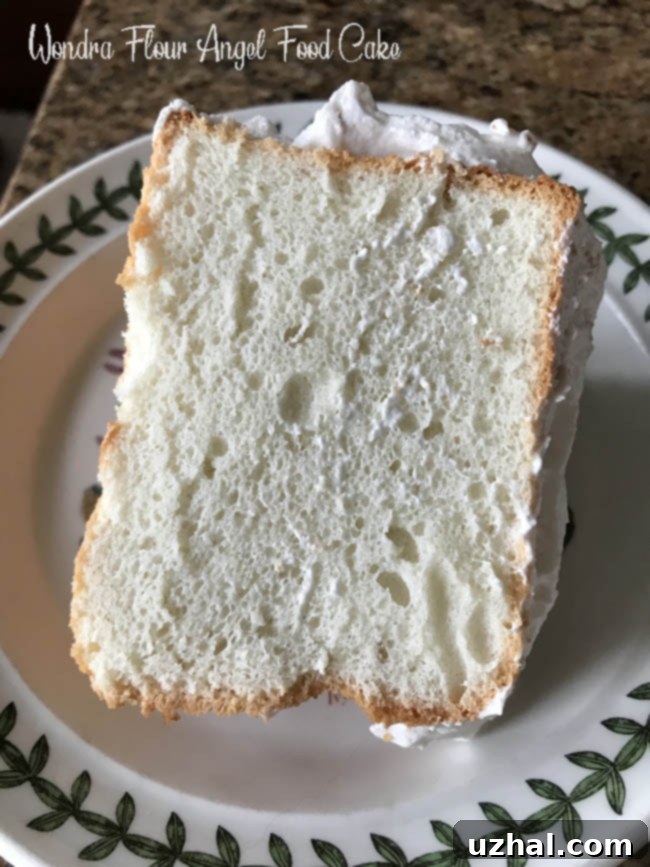Effortless Elegance: Baking the Perfect Wondra Flour Angel Food Cake for Every Occasion
Baking can be a delightful journey, and few desserts evoke pure joy quite like a light, airy, and utterly delicious angel food cake. For many home bakers, however, traditional angel food cake recipes can feel intimidating, often requiring meticulous sifting, precise ingredient temperatures, and delicate handling of egg whites. But what if there was a simpler way to achieve that ethereal fluffiness without all the fuss? Enter the Wondra Flour Angel Food Cake – a recipe designed to demystify this classic dessert and bring it within reach of every baker, regardless of experience level.
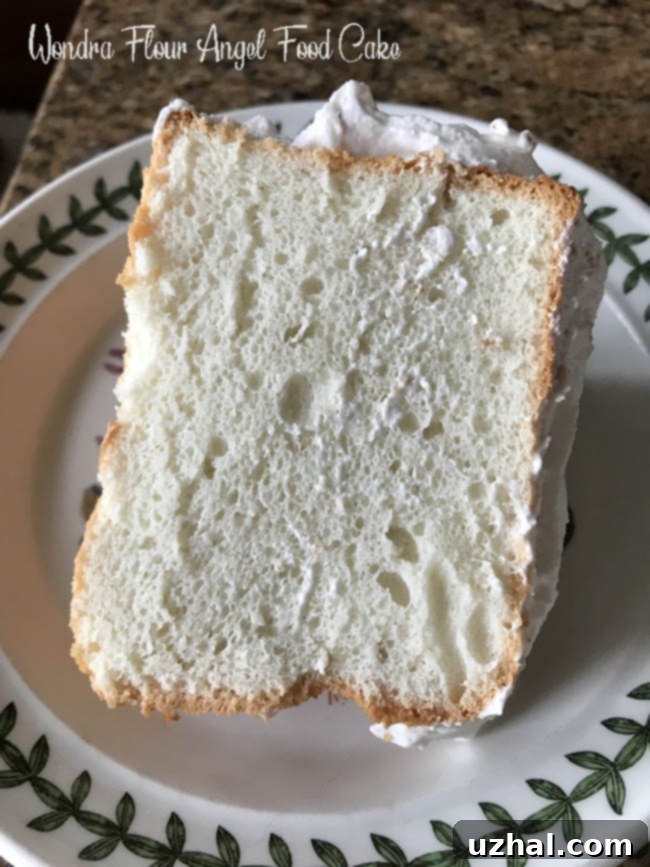
My past experiments with Wondra flour were mostly focused on savory applications or perhaps a batch of Wondra Sugar Cookies, which, while tasty, presented some challenges with dough handling. This time, I embarked on a new adventure with a recipe that promised to revolutionize my approach to angel food cake. This particular Wondra Flour Angel Food Cake recipe comes from an inspiring article on Taste.com, where the author boldly declares she’s reclaiming the angel food cake from overly complicated renditions often associated with “suburban ladies” who made it unnecessarily fussy. And after trying it, I wholeheartedly agree with her premise.
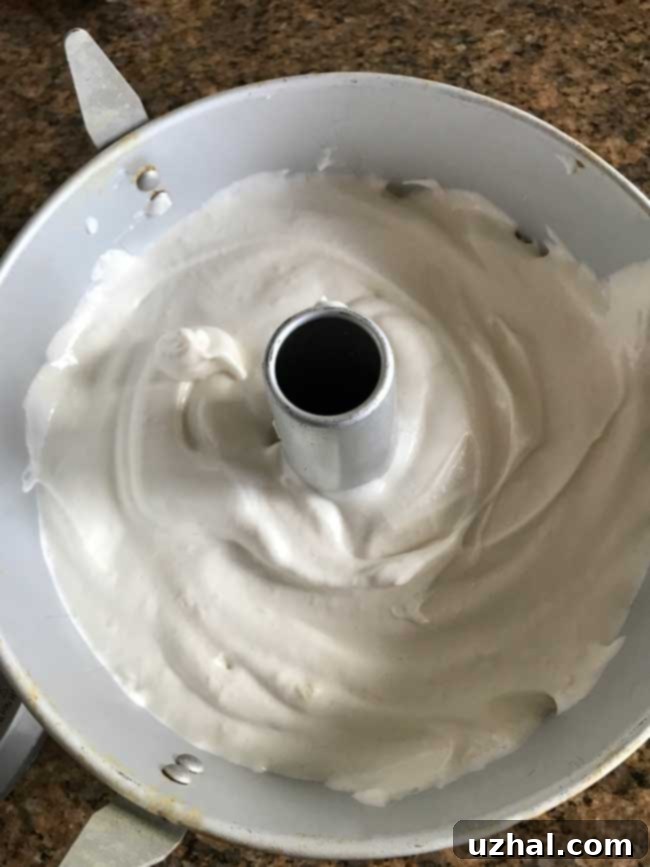
The Magic of Wondra Flour: Simplifying Angel Food Cake Baking
At the heart of this simplified approach is Wondra flour. For those unfamiliar, Wondra is an instantized, pre-cooked, and dried granular wheat flour. Its unique processing gives it an incredibly fine, free-flowing texture that resists clumping and dissolves effortlessly into liquids. This characteristic makes it a dream comecome true for batters and sauces, ensuring a smooth consistency without the need for rigorous sifting—a step often cited as crucial for traditional angel food cake recipes using regular cake flour.
The beauty of Wondra flour in an angel food cake lies in its ability to integrate seamlessly with the delicate egg white meringue. Unlike conventional flours that can form stubborn lumps, Wondra disperses evenly, contributing to a consistently tender crumb and a uniform, airy structure. This means you can bypass the traditional advice of using “extra fine sugar” or painstakingly sifting your flour multiple times. The natural properties of Wondra do much of the heavy lifting for you, allowing for a more forgiving and enjoyable baking experience.
This recipe truly lives up to its promise of simplicity. Instead of separate bowls for whipping egg whites to stiff peaks and then meticulously folding in dry ingredients, this method has you just pour everything—egg whites, sugar, cream of tartar, and vanilla—into your stand mixer bowl right from the start. You then beat this mixture until it’s thick, smooth, and white, only then gradually adding the Wondra flour. This streamlined process dramatically cuts down on preparation time and simplifies cleanup, making homemade angel food cake an achievable weeknight treat rather than a weekend project.
Comparing Convenience: A New Standard for Angel Food Cake
Having made countless angel food cakes over the years – probably around 700 variations if you count all the experiments – I can confidently say this Wondra version stands out for its sheer convenience. While I can’t definitively claim it tastes “better” or has a “superior” texture compared to some of my other beloved recipes, as many of those also yield fantastic results, this one unquestionably comes together with remarkable speed and ease. The traditional angel food cake often requires careful attention to egg white temperature, precise folding techniques, and patience, but this Wondra recipe feels almost effortless by comparison. It’s perfect for those moments when you crave a homemade, light, and impressive dessert without dedicating hours to preparation.
The final cake is wonderfully airy, with that signature delicate crumb that defines a great angel food cake. It holds its shape beautifully and serves as a perfect canvas for various toppings. Whether you’re a seasoned baker looking for a faster method or a beginner intimidated by the complexities of meringue-based cakes, this recipe offers a delightful and stress-free path to success. The satisfaction of pulling a perfectly risen, golden-brown angel food cake from the oven, knowing how simple the process was, is truly rewarding.
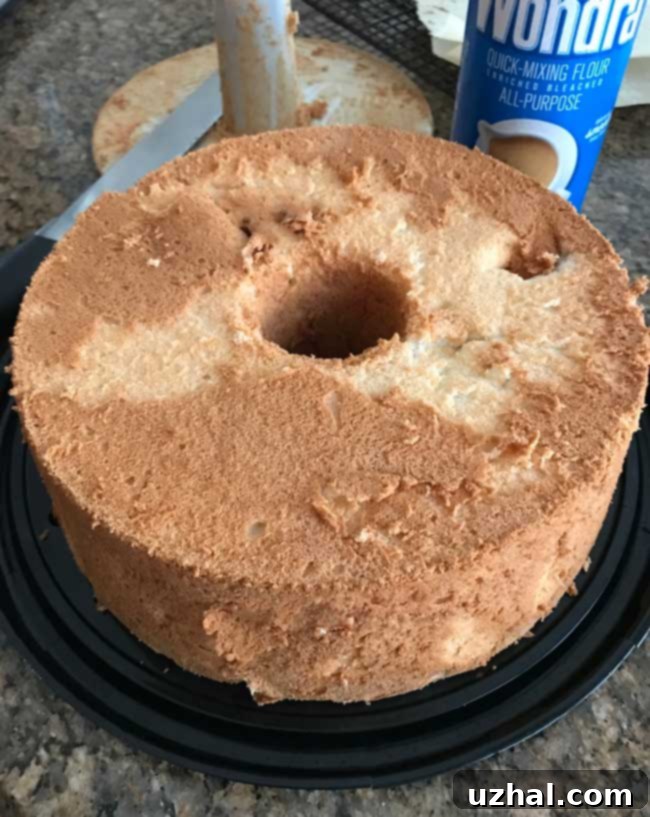
The Perfect Topping: Mastering Seven Minute Icing and Beyond
No angel food cake feels truly complete without a luscious topping, and for this cake, I opted for a classic: Seven Minute Icing. This meringue-based frosting is known for its glossy, marshmallow-like texture and its ability to perfectly complement the lightness of angel food cake. My attempt, however, turned into a bit of a race against time. In my enthusiasm, I allowed my double boiler to get too hot, resulting in the icing coming together in a rapid five minutes instead of the customary seven. This meant it began to crust over quickly in the pan, demanding swift action to get it onto the cake. Luckily, I managed to “spackle” it on, and despite my rushed application, the end result was still a beautifully adorned and incredibly delicious cake that everyone thoroughly enjoyed.
For those attempting Seven Minute Icing, a key tip is to maintain a gentle, consistent heat under your double boiler. You want the water to simmer, not boil vigorously, to allow the egg white mixture to cook and thicken slowly and evenly. Keep whisking constantly to prevent the eggs from scrambling and to incorporate sufficient air for that signature fluffy texture. Once it reaches stiff peaks, apply it immediately. If Seven Minute Icing feels a bit daunting, angel food cake is also divine with a simple dusting of powdered sugar, a dollop of fresh whipped cream, or a generous serving of seasonal berries. A tart lemon glaze or a chocolate ganache can also elevate the cake, offering different flavor profiles to suit any preference.
Angel Food Cake: A Brief History and Baking Principles
Angel food cake holds a special place in American culinary history, believed to have originated in the late 19th century. Its name is said to reflect its heavenly lightness and white color, reminiscent of angel wings. Unlike other cakes that rely on butter or shortening for tenderness, angel food cake is fat-free, deriving its structure and airy texture entirely from whipped egg whites. This makes it a unique challenge for bakers, as the success of the cake hinges on the stability and volume of the meringue.
Key ingredients like cream of tartar play a crucial role. Cream of tartar, an acidic salt, helps stabilize the whipped egg whites, allowing them to reach maximum volume and preventing them from collapsing. It also contributes to the cake’s pristine white color. The specific type of flour used is also vital. Traditionally, finely milled cake flour is preferred for its low protein content, which yields a tender crumb. However, as this recipe demonstrates, instantized flours like Wondra can achieve similar, if not superior, results with added convenience due to their exceptionally fine and clump-free nature.
When baking angel food cake, always use an ungreased tube pan with a removable bottom. The batter needs to cling to the sides of the pan to climb and rise properly. After baking, the cake is typically inverted immediately and cooled upside down on the pan’s “feet” or over a bottle. This prevents the delicate, airy structure from collapsing under its own weight as it cools. This Wondra recipe respects these fundamental principles while simplifying the mixing process, offering the best of both worlds: traditional quality with modern ease.
Wondra Angel Food Cake Original Recipe Insights
For those interested in the source inspiration, here’s the original article and recipe from Taste.com that inspired this simplified baking journey. A small but important detail to note from the original recipe: it doesn’t explicitly state *when* to add the salt. Based on my experience and common angel food cake practices, adding it along with the cream of tartar and vanilla, or towards the end of the whipping process, works well to ensure even distribution without hindering meringue formation. Additionally, the recipe recommends ¾ teaspoon of fine salt, which typically refers to Diamond Crystal Kosher Salt (the red box). If your pantry only contains Morton Kosher Salt (the blue box), which is denser, a scant ½ teaspoon should provide equivalent seasoning. These minor adjustments ensure perfect balance in your delicious Wondra Flour Angel Food Cake.
- Wondra Flour Sugar Cookies
- Angel and Chiffon
- Loaf Pan Chocolate Angel Food Cake
- Angel Food Cake with Seven Minute Icing
- Loaf Pan Angel Food Cake
Recipe
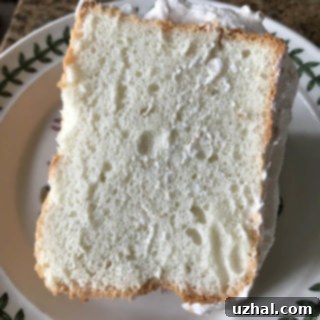
Wondra Flour Angel Food Cake
Anna
Pin Recipe
Ingredients
- 12 large egg whites (approx. 425 grams, ensure they are at room temperature for best volume)
- 1 ½ cups granulated sugar (approx. 290 grams, no need for superfine sugar thanks to Wondra)
- 1 teaspoon of cream of tartar (essential for stabilizing egg whites)
- 2 teaspoons vanilla extract (for classic flavor, or try almond extract for a twist)
- ½ teaspoon salt (Morton kosher) or ¾ teaspoon Diamond kosher (adjust based on salt type for balanced flavor)
- 1 cup instant flour (specifically Wondra brand for best results)
Instructions
-
Preheat your oven to 350 degrees F (175 C). Ensure you have an angel food cake pan with a removable bottom ready. Crucially, do NOT grease the pan; the batter needs to cling to the sides to rise properly.
-
In the bowl of a stand mixer, combine the egg whites, granulated sugar, cream of tartar, and vanilla extract. This direct method simplifies the traditional meringue process.
-
Attach the whisk attachment to your stand mixer. Begin beating the mixture on medium speed, then gradually increase the speed to high. Continue beating for approximately 5 minutes, or until the mixture becomes thick, smooth, and turns a brilliant white, resembling soft, glossy meringue. At this point, beat in the specified amount of salt.
-
Reduce the mixer speed to medium-low. Gradually sprinkle in the instant Wondra flour, beating just until it is fully incorporated into the batter. Avoid overmixing. Once the flour is mostly mixed, remove the bowl from the stand mixer and give it a final gentle stir with a heavy-duty rubber scraper or spatula to ensure all the flour is thoroughly combined, especially from the bottom and sides of the bowl.
-
Carefully scrape the airy batter into your prepared angel food cake pan. Use an offset spatula or the back of a spoon to smooth the top evenly. To release any trapped air bubbles that could create large holes in your cake, hold the pan approximately 2 inches off the counter and gently drop it once or twice.
-
Bake the cake for 50 minutes. The cake should be golden brown and spring back when lightly touched. Once baked, immediately invert the angel food cake pan onto its cooling feet (or over the neck of a bottle) and allow it to cool completely for at least 1 hour. This crucial step prevents the delicate cake from collapsing. Once fully cooled, carefully remove the cake from the pan by loosening around the edges, the middle tube, and the bottom with a thin bread knife or offset spatula. Serve plain or with your favorite frosting and toppings.
